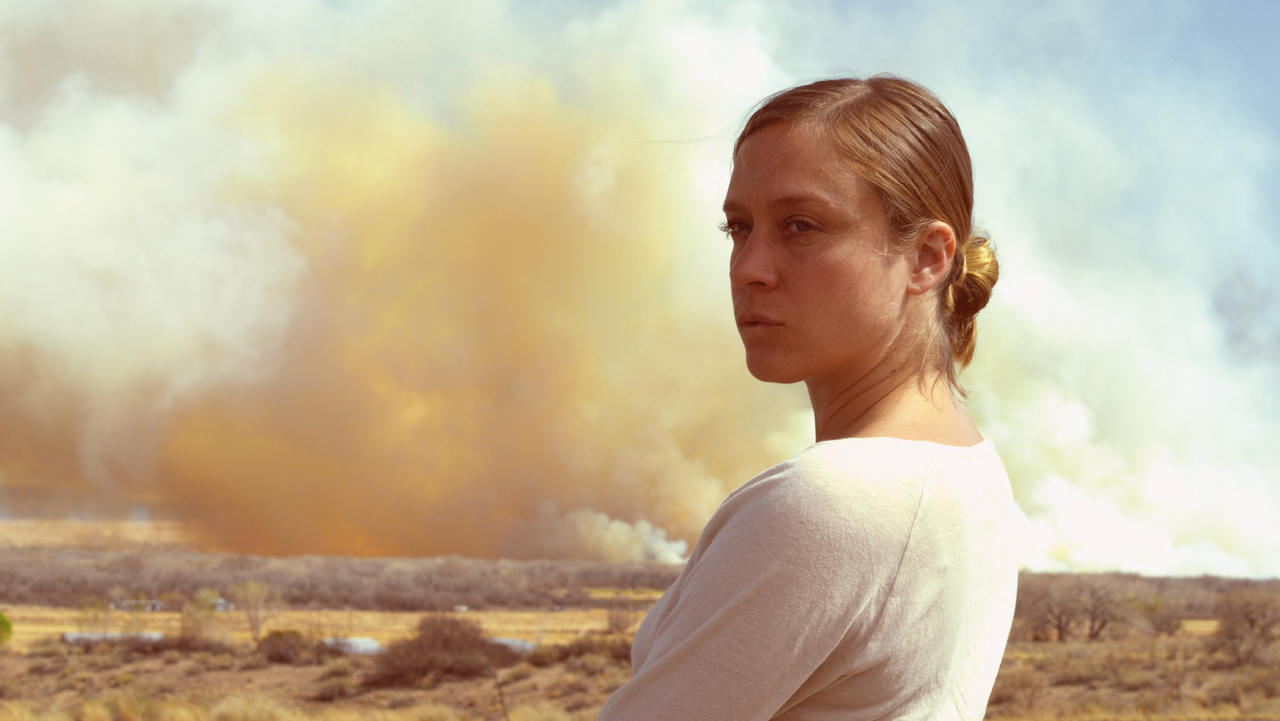Doug Aitken presents his spectacular film and sound installations across the entire exhibition space of SCHIRN.
The Schirn will present Aitken's kaleidoscopic universe in more than 1400 square meters of exhibition space. "SONG 1" (2012/2015), "Black Mirror" (2011), "migration (empire)" (2008) and "diamond sea" (1997) will be shown in atmospheric spaces with corresponding sculptures, such as "Sunset (black and white)" (2011) and "Listening" (2011). "Sonic Fountain II" (2013/2015) will transform the public and freely accessible Rotunda of the Schirn into an acoustic-spherical space. Doug Aitken takes the viewers of his work on a synesthetic journey around the world and to their inner self -- in a maelstrom of expressive and rhythmically structured images. He poses existential questions, but does not provide easy answers. Instead, the artist expresses an almost ingenious enthusiasm for humanity and communal interaction. His themes continuously revolve around human civilization: the alienation of the individual and isolation in the mass; man's relationship with nature and technology; and technology's coexistence with nature as well as human relationships per se.
The exhibition journey starts in the exterior space. In the Schirn-Rotunda, there is "Sonic Fountain II", a site-specific extended version of the work from 2013. It marks the beginning of the exhibition, and, at the same time, provides its soundtrack. Water drips and spurts into a basin formed from sand and gravel, filled with milky liquid. It is a musical composition of liquid noises that is compacted acoustically by the vessel-shaped architecture of the Rotunda.
The first work in the interior of the Schirn is the multi-channel video installation "SONG 1" from 2012/2015. Originally developed for the facade of the Hirshhorn Museum and Sculpture Garden in Washington DC, the work will be projected for the first time in an interior space onto either side of cylindrical screens suspended from the ceiling. "SONG 1" looks at the hustle and bustle of a US city at night. Images of ordinary daily life consisting of work, endless road trips and looking for human contact, connection and intimacy are revealed at different locations, such as a factory, a fast food restaurant and a parking lot. The musical theme for the film is the song "I Only Have Eyes For You" (1934, Dames). Aitken gets various protagonists, including Tilda Swinton and Beck to sing the song in myriad interpretations, and thus determine the rhythm and atmosphere of the individual images.
In the second major video installation, "Black Mirror" from 2011, Aitken explores the nomadic journeys of a young woman who is trapped in a cycle of accomplishments and realities of modern civilization -- airport, hotel, Internet, highway, smartphone, pills. Aitken does not reveal where she comes from, who she is, nor why she travels. Rounded up yet driven, in a continuous present, the young woman, played by American actress Chloë Sevigny, is constantly moving from place to place, for her own sake. It frequently appears to her as if she looked at herself from the outside, and the places and landscapes pass her by like a movie. Movement -- impressively reproduced by Aitken's camera -- is the actual subject of the journey and its sole objective.
Aitken continues to expand on the theme of movement in the subsequent work "migration (empire)" from 2008. He describes the situation of being everywhere, yet ultimately nowhere, by relocating the action to motel rooms outside the metropolises. At Schirn, the work is presented on three large billboard screens, mounted one after another. This form of presentation is reminiscent of a row of billboards along a road. Aitken's camera gradually leads the viewer into individual rooms where animals appear: a horse stands on a threadbare carpet, its hoofs kick up dust; a beaver bathes in a tub, rabbits loll on beds. There is no discernible narrative action, Aitken rather focuses on seeing as such, and the thought patterns that limit and curtail visual discovery.
[Translate to English:]
Der Ausstellungsparcours endet mit einem im Œuvre des Künstlers zentralen Werk, "diamond sea" aus dem Jahr 1997 -- seine erste Mehrkanal-Videoinstallation und seine erste architektonische Arbeit. Für das Landschaftspanorama verbrachte Aitken Monate in der Wüste Namib im Südwesten Afrikas. Er setzt die einst hochgesicherten und heute zerfallenden Anlagen der Diamanten-Minen mit der unverwechselbaren Natur in Beziehung. Wie Aitken selbst sagt, zeigt er eine "stille, fast halluzinatorische Phantomwelt". Bilder der kargen und unwirtlichen Anlage treffen auf poetische Bilder der Wüste und des Meeres. In "diamond sea" tritt der Künstler bewusst als Autor zurück, um der Rezeption, der körperlichen und geistigen Erfahrung des Werkes Raum zu geben.Zwischen den vier großen Videoinstallationen findet sich eine konzentrierte Auswahl an Skulpturen des kalifornischen Künstlers, wie "Speed" von 2012 oder "1968 (broken)" aus dem Jahr 2011. Aus unterschiedlichen Materialien gefertigt erinnern sie an leuchtende Werbeschilder, an laute und aggressive urbane Zeichen der Gegenwart. Aitkens Skulpturen schließen an die Themen seiner filmischen Arbeiten an und betonen den interaktiven Charakter seiner Installationen.
Doug Aitken (*1968, Redondo Beach, Kalifornien) studierte von 1987 bis 1991 am Art Center College of Design, Pasadena, wo er seinen Bachelor of Fine Arts erhielt, und von 1986 bis 1987 am Marymount College, Palos Verdes in Kalifornien. Aitken arbeitet genreübergreifend mit anderen Künstlern, Schauspielern und Musikern zusammen. Das Spektrum seines künstlerischen Schaffens umfasst Film, Musik, Architektur, Performance und Happening sowie Skulptur. Aitken hat bereits zahlreiche Auszeichnungen erhalten. 1999 wurde er mit dem International Prize, dem Goldenen Löwen der #Biennale di Venezia, ausgezeichnet.
